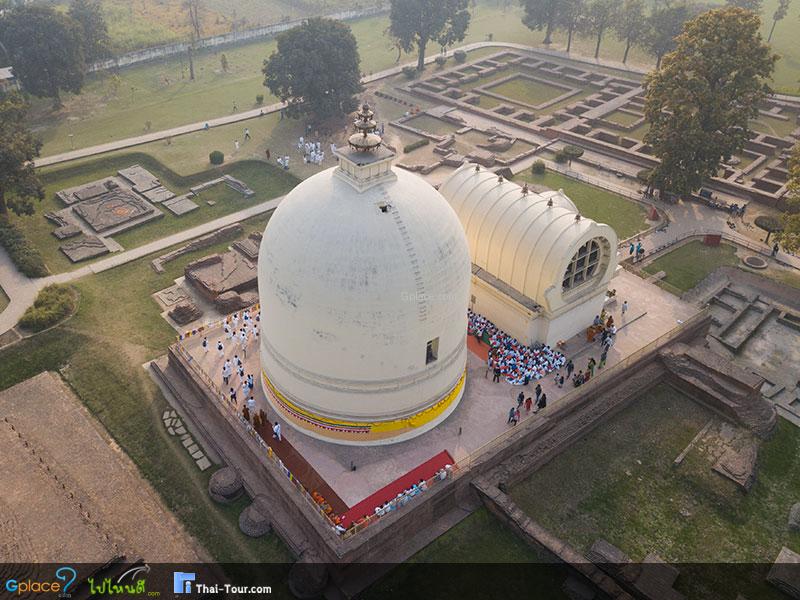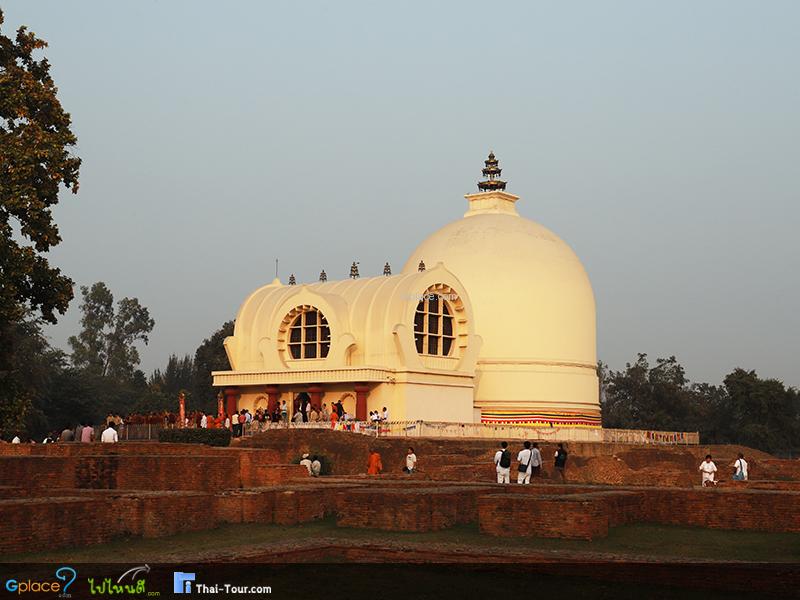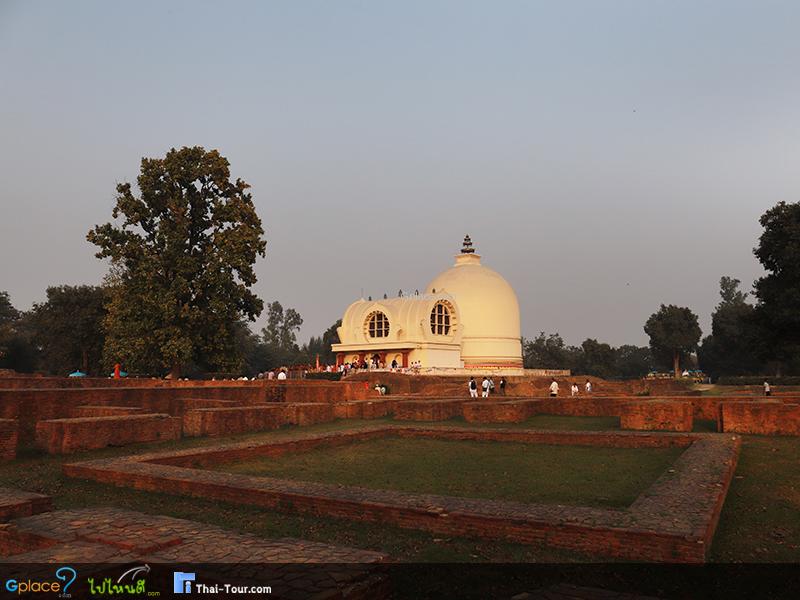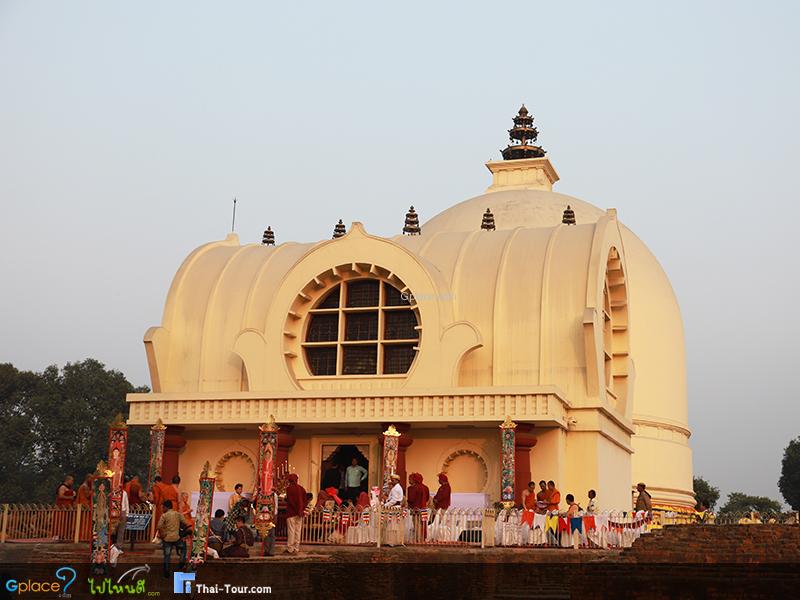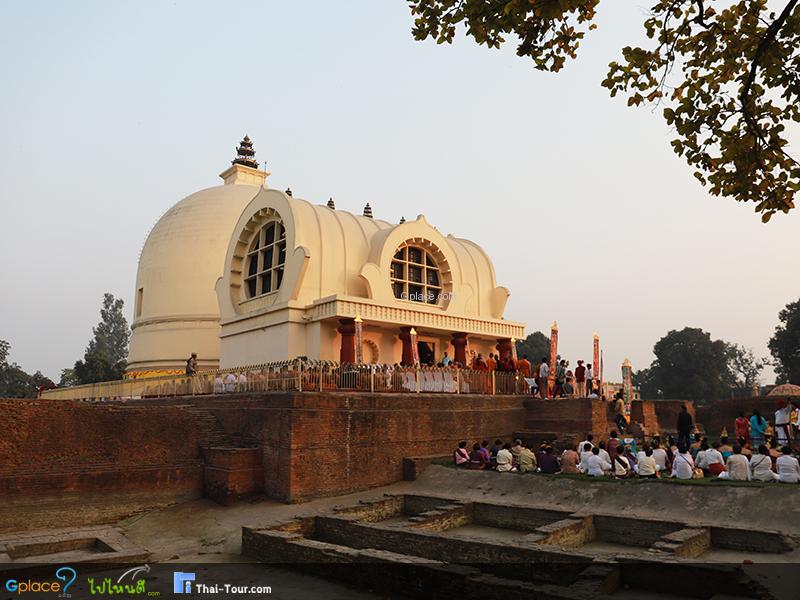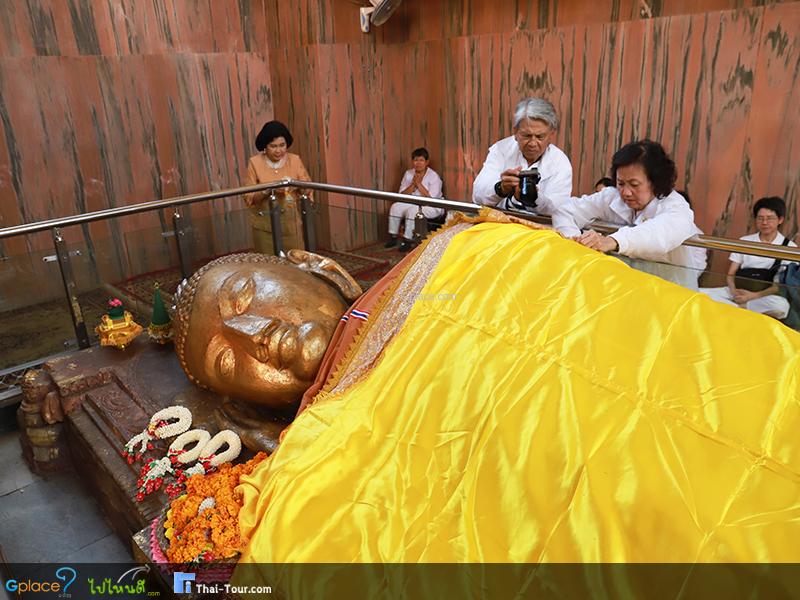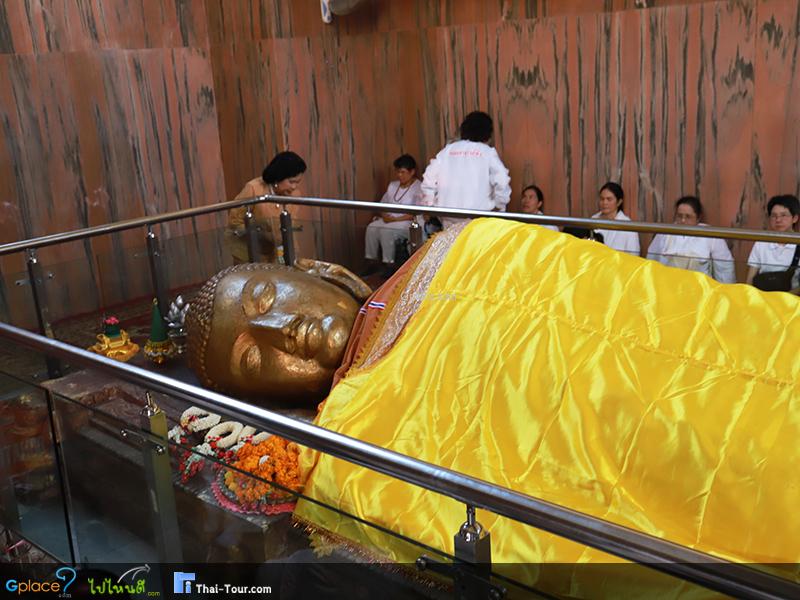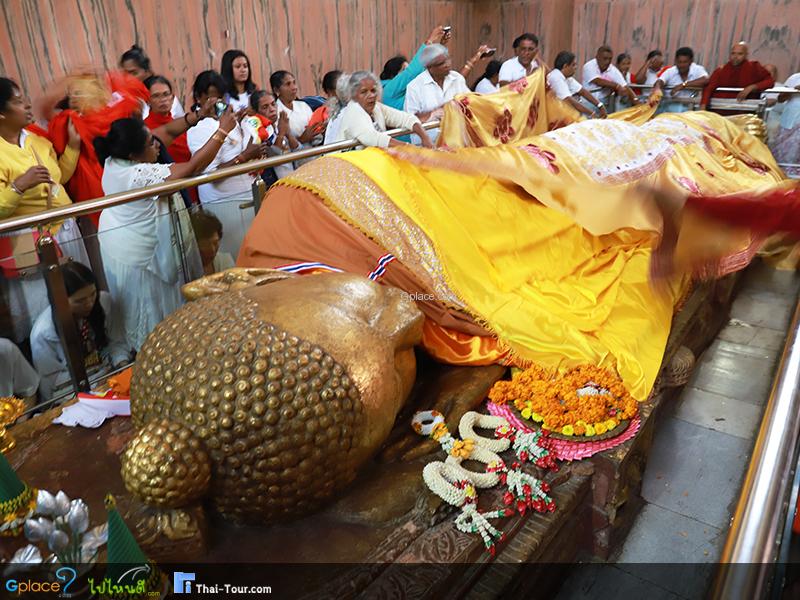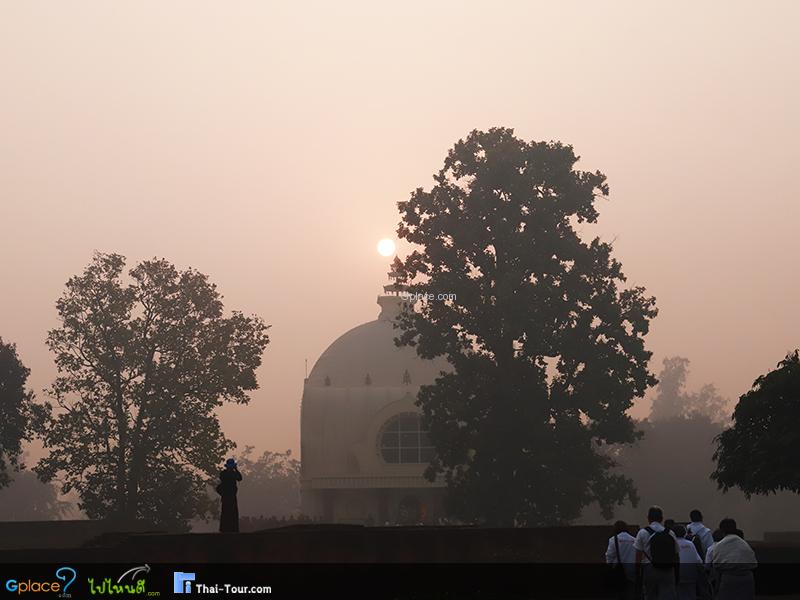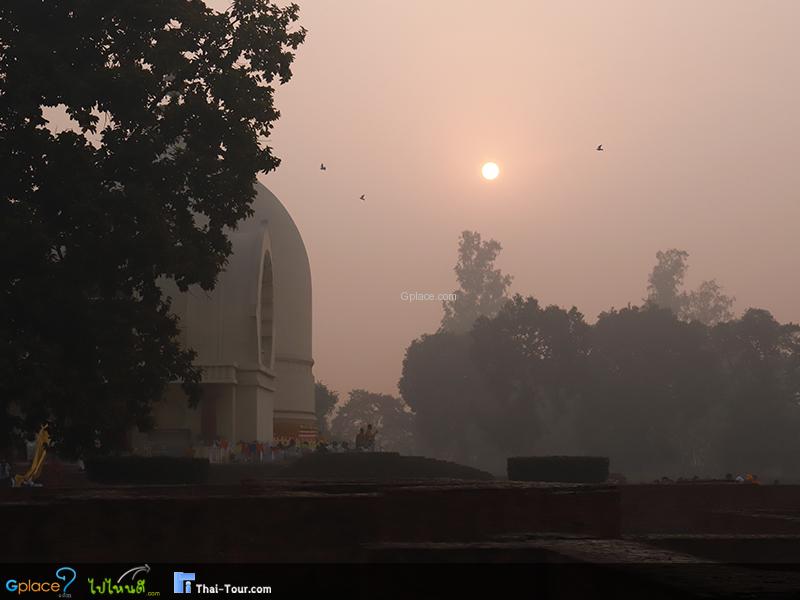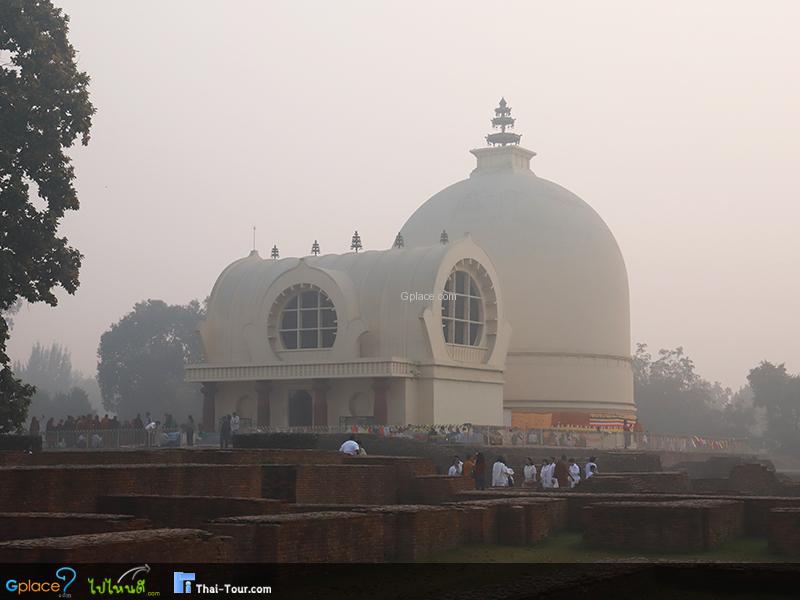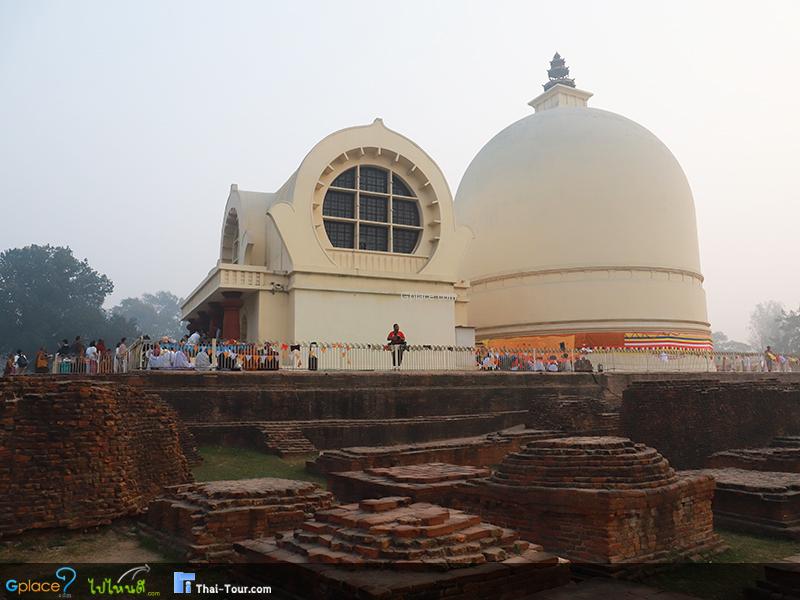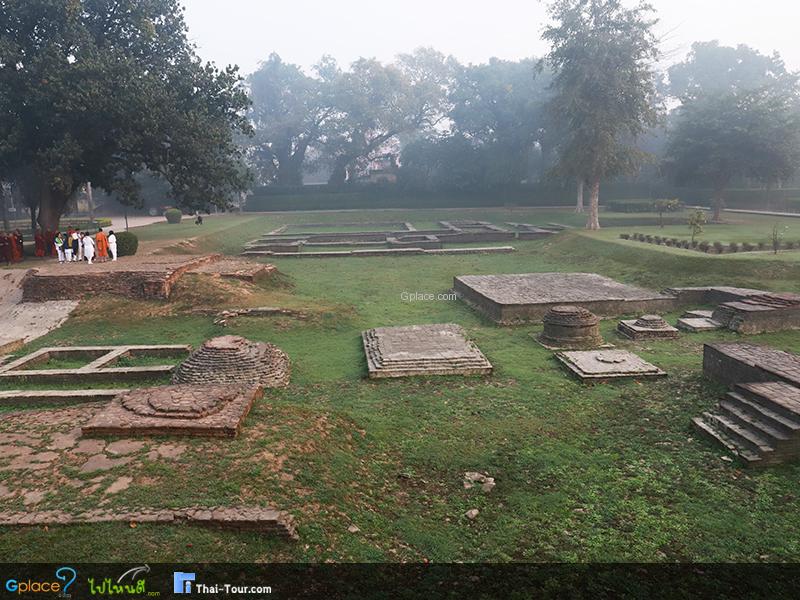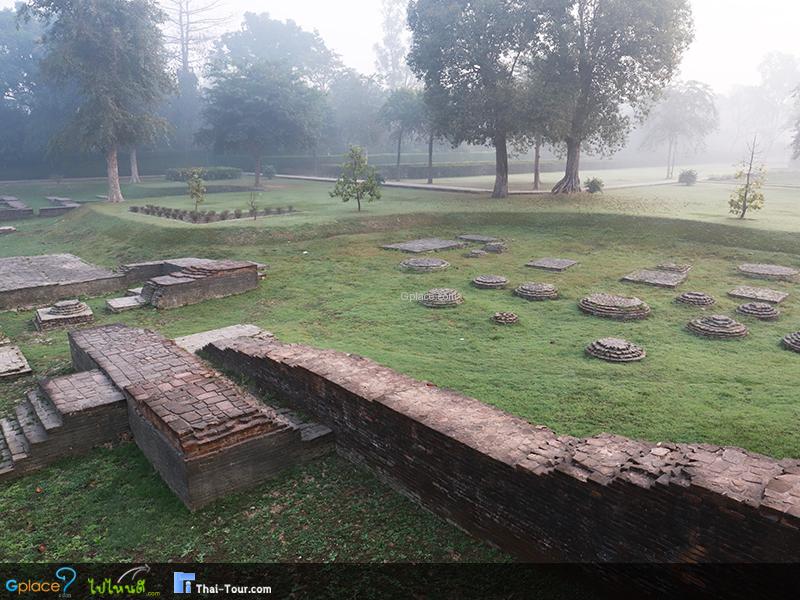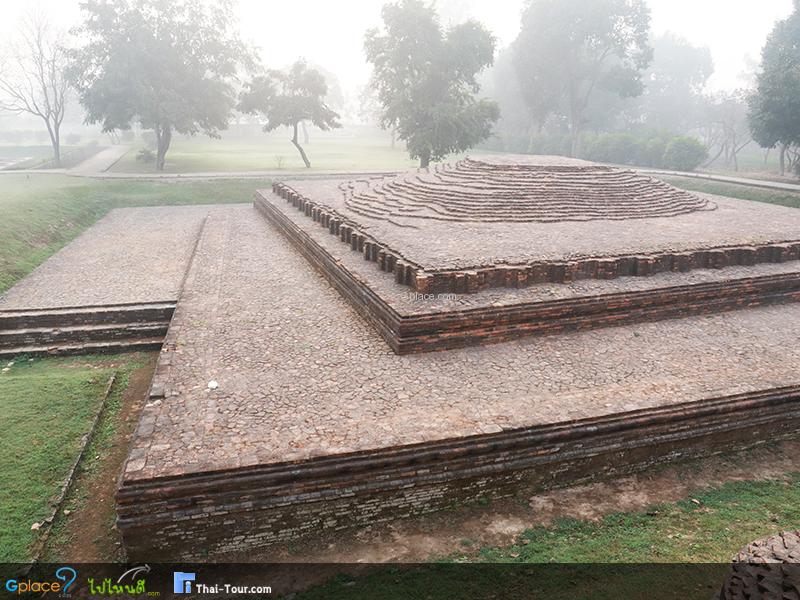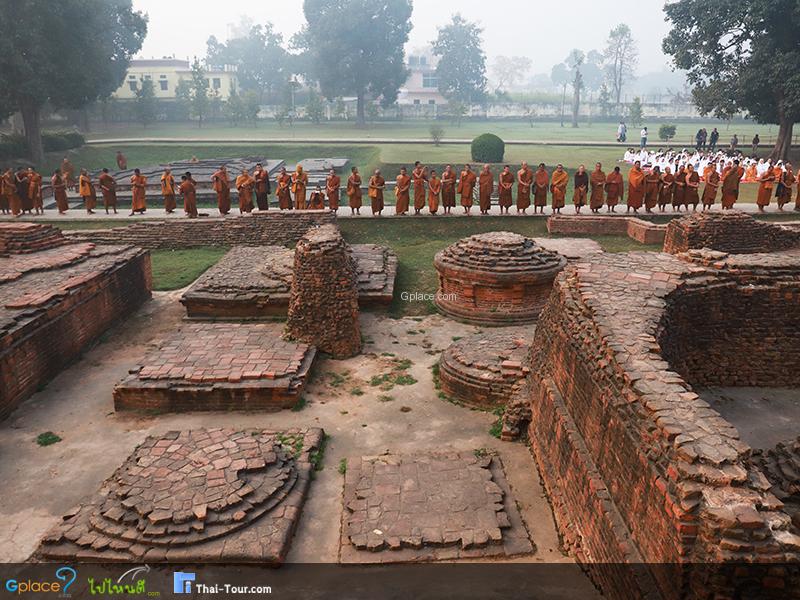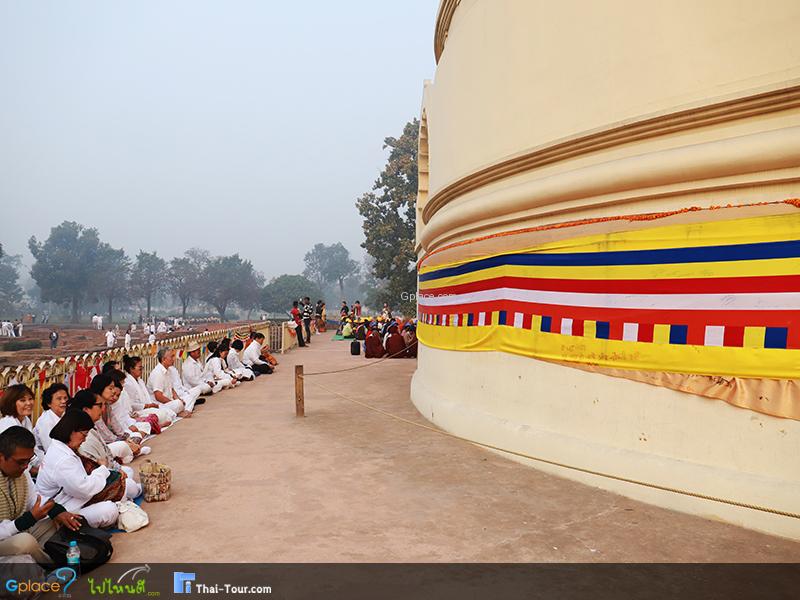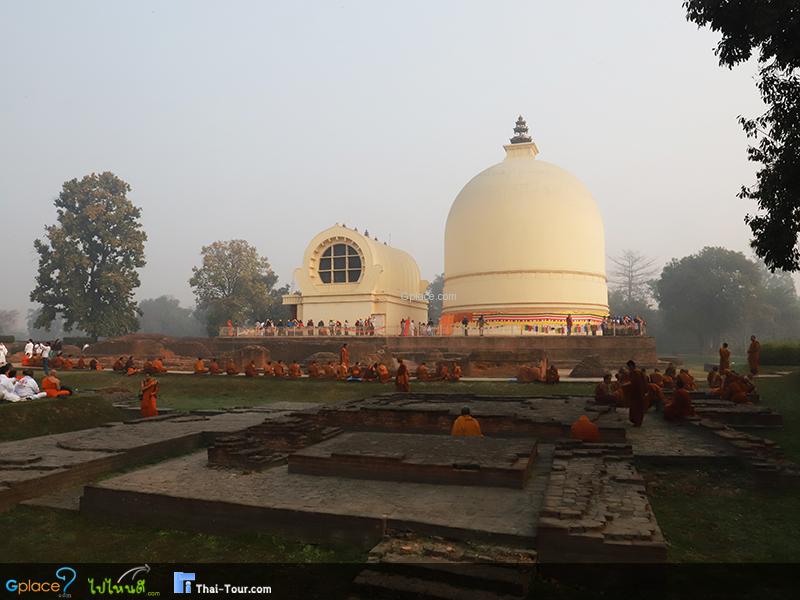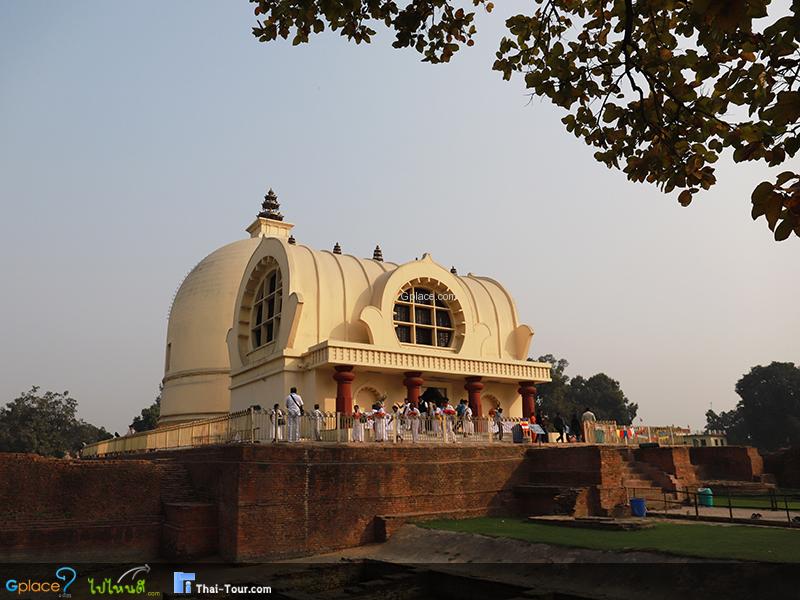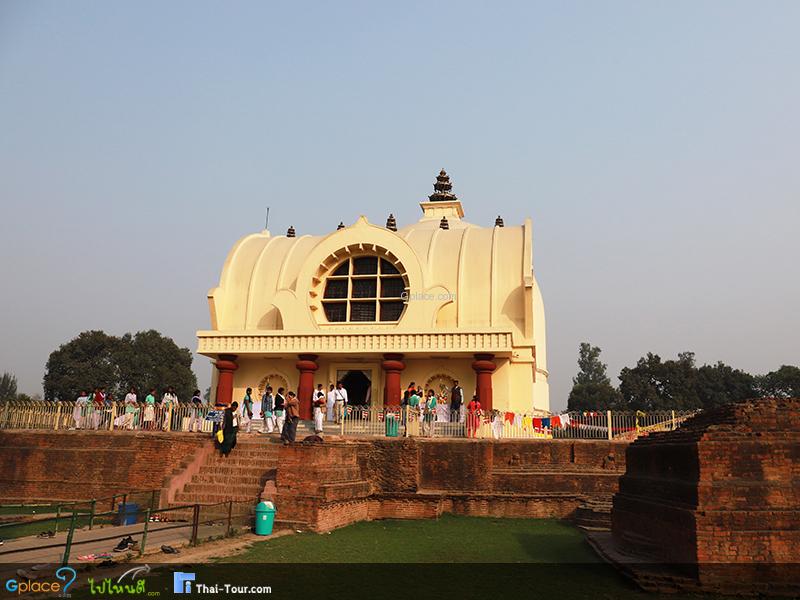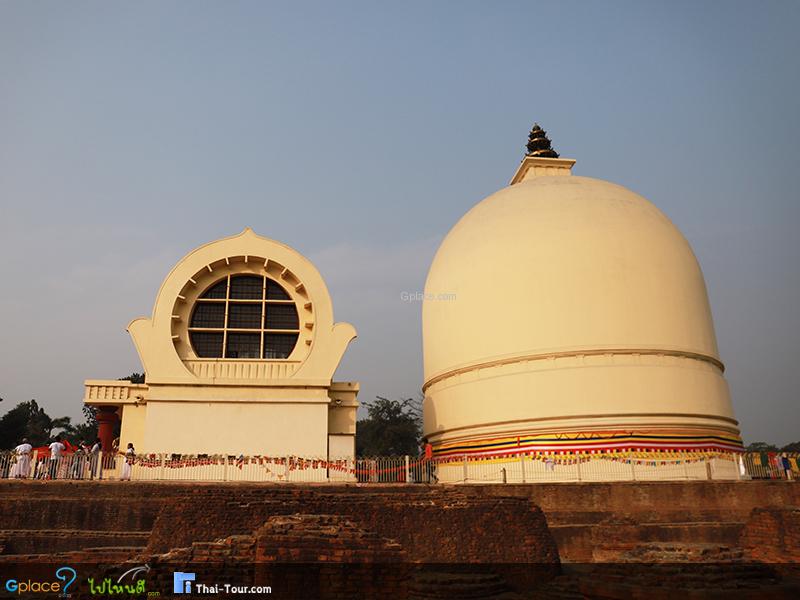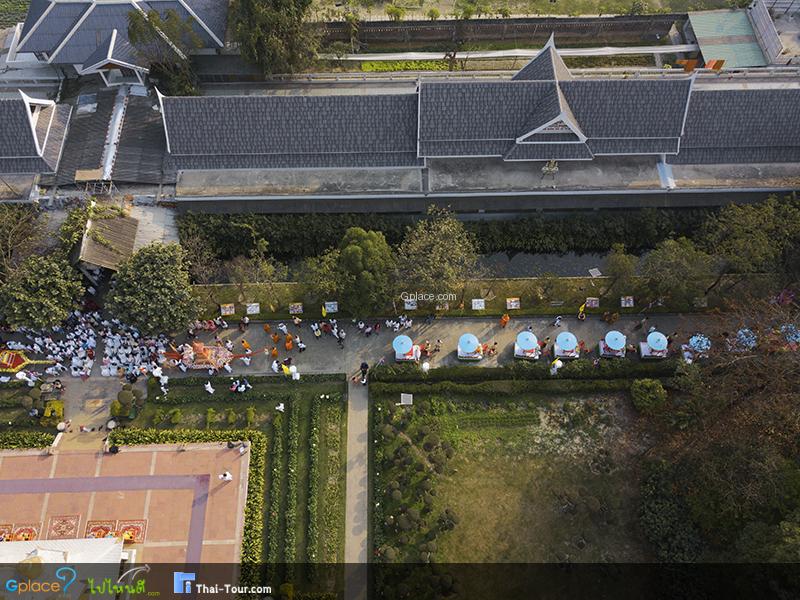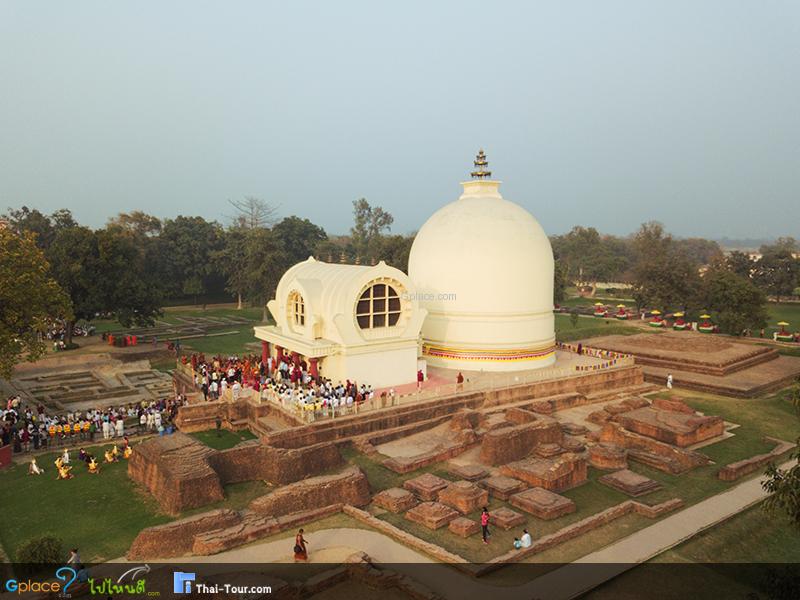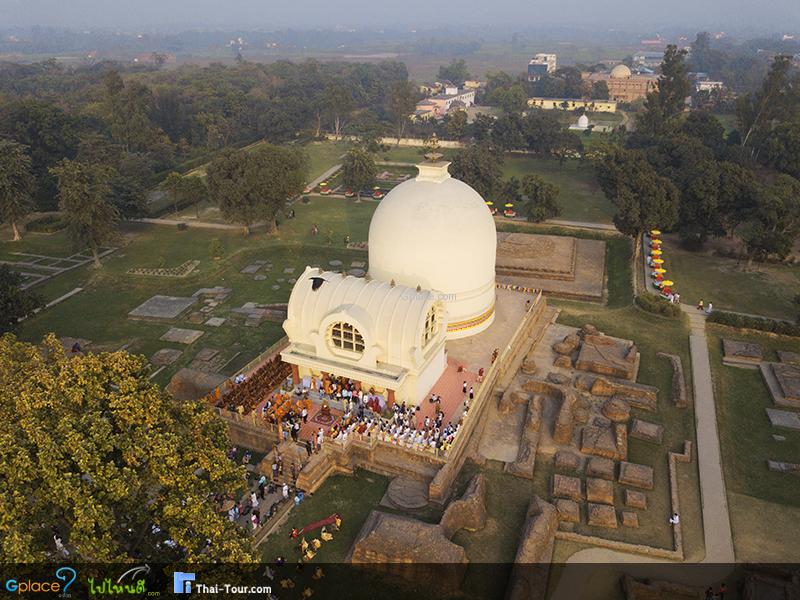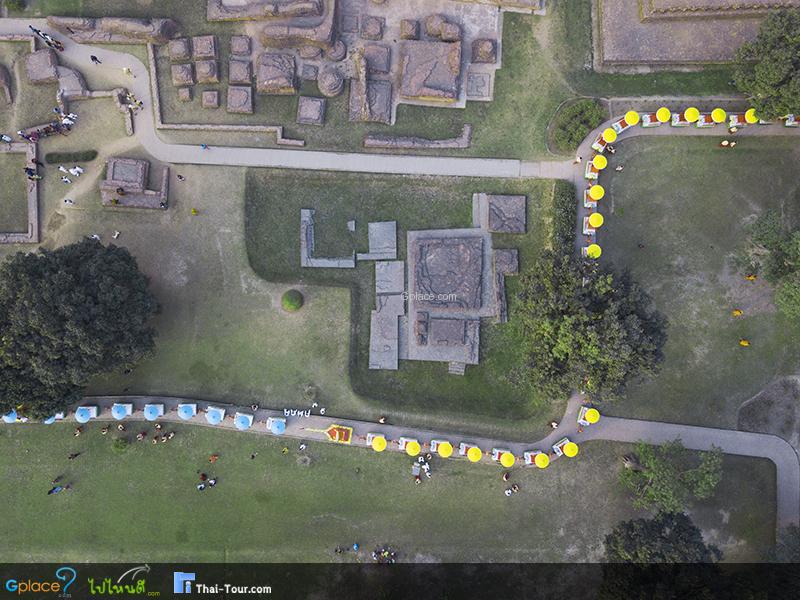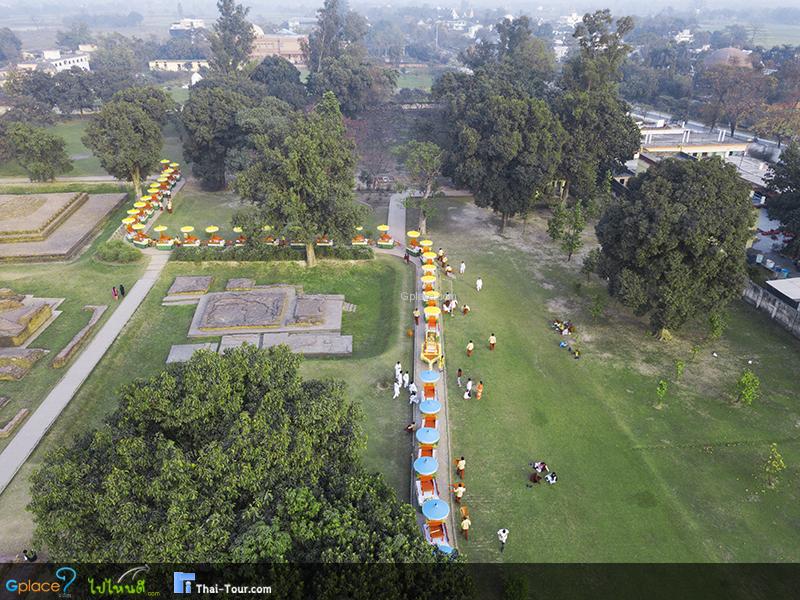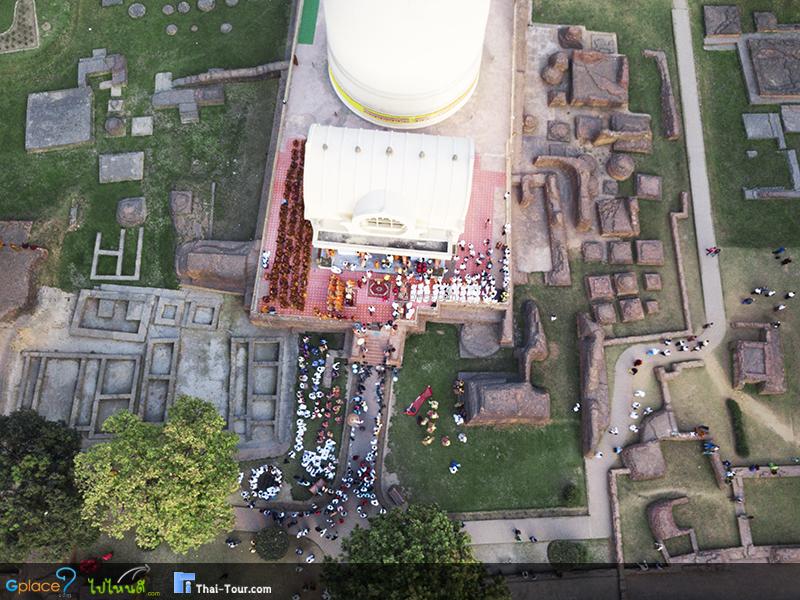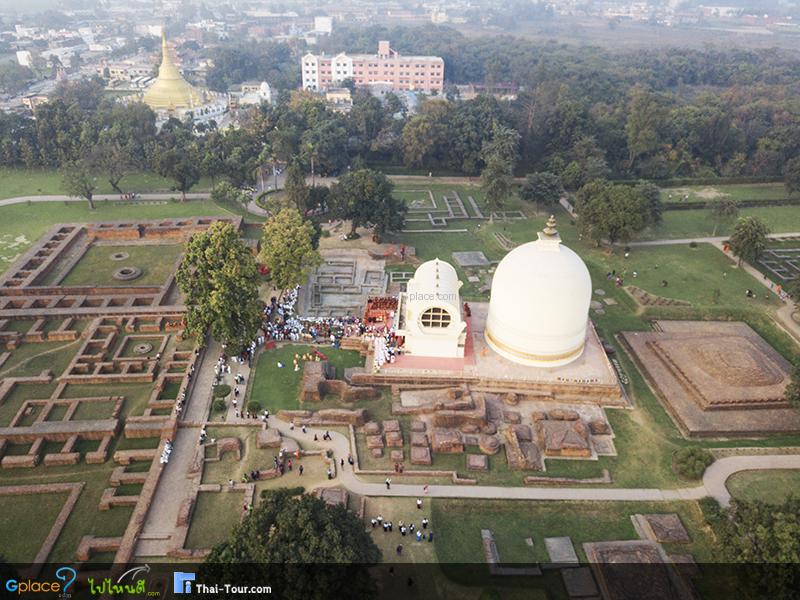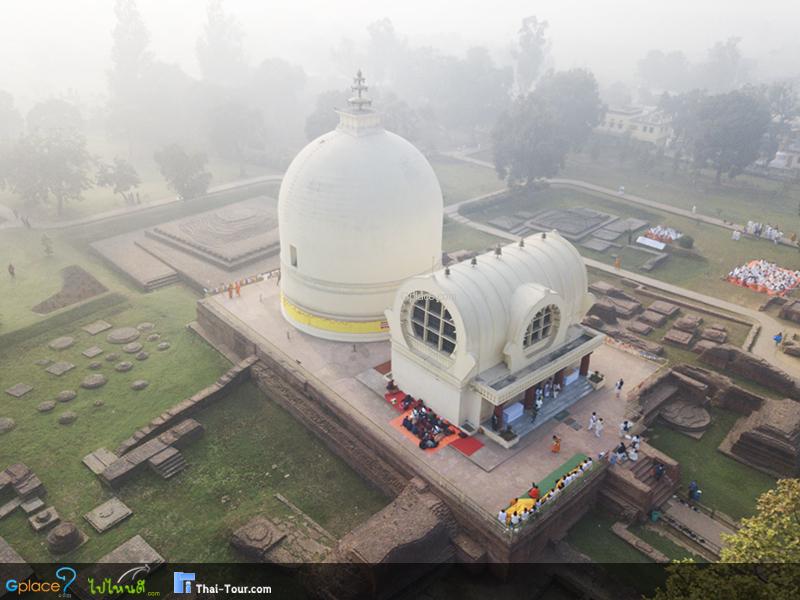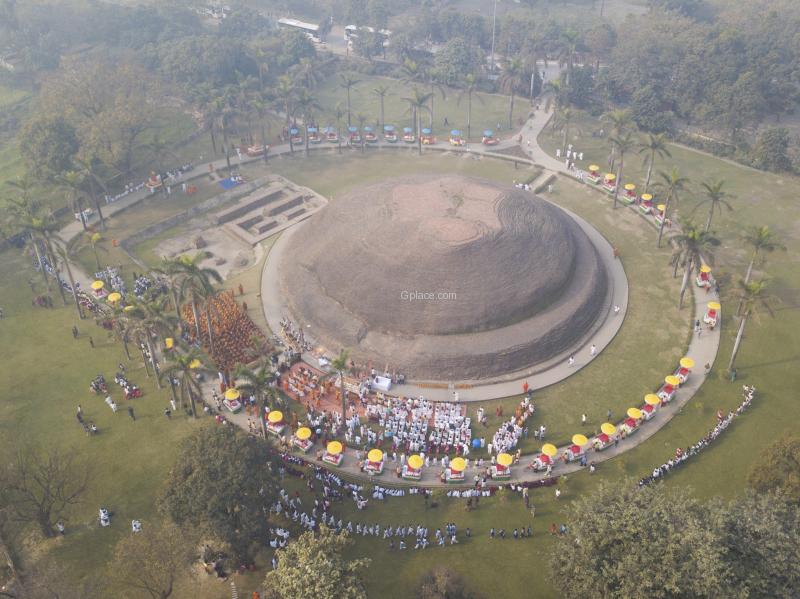“This stupa commemorates the Buddha's passing, with the Mahaparinirvana Vihara housing a revered reclining Buddha statue nearby, all set within the serene atmosphere reminiscent of the ancient Sal Grove.”
Mahaparinirvana Stupa (Mahaparinirvana Stupa) stands in Kushinagar, Uttar Pradesh, India, holding immense significance in the Buddhist world. This sacred stupa marks the very spot where Gautama Buddha attained Mahaparinirvana (the ultimate passing away) at the age of 80. This momentous event occurred beneath twin Sal trees in the Sal Grove (or Salavanodyan) belonging to the Malla kings, in the ancient city of Kushinagar, part of the Malla Republic. As such, it is one of the four principal Buddhist pilgrimage sites that devotees worldwide aspire to visit, commemorating a pivotal moment in Buddhist history. Located not far from the Gorakhpur region and nestled on the banks of the Gandak River, Kushinagar stands out as a city of stupas and temples with origins traceable back to the pre-Buddha period.
Kushinagar's history dates back to well before the Buddha's time. It was the capital of the Malla Republic, jointly governed by the Malla chieftains of Kushinagar and Pava. After 45 years of missionary activities, the Buddha, severely stricken with illness in his final days, journeyed to Kushinagar. Here, he ordained his very last disciple, Subhadda Paribbajaka, and delivered his final words to the Sangha before attaining Parinirvana in 487 BCE. The Buddha chose the seemingly humble town of Kushinagar for his Parinirvana, rather than larger cities like Sravasti or Rajgir, despite Ananda's plea. His profound reasons included:
- first, to expound the Sutasana Sutta, an important discourse meant for that specific location;
- second, to provide salvation to Subhadda Paribbajaka, who attained arahantship just before the Buddha's passing; and
- third, to prevent potential wars over his sacred relics among powerful kingdoms, as the Malla chieftains, though from a smaller state, were renowned for their valor and readiness to protect the relics.
Furthermore, the Buddha recalled Kushinagar's past glory, when it was known as "Kusavati," a vast and prosperous city, 12 yojana long and 7 yojana wide, ruled righteously by King Mahasudassana (the Great King Sudassana). He recounted how this ancient city once resounded with "ten sounds"—elephants, horses, chariots, drums, tabors, lutes, singing, cymbals, conches, and people calling one another for food—illustrating its former abundance and happiness.
The current Mahaparinirvana Stupa is a restored structure built over the original spot of the Buddha's Parinirvana. Historical records indicate that Emperor Ashoka the Great, who undertook a Dharma Yatra (pilgrimage) in 260 BCE, played a significant role by donating substantial wealth, building stupas, and erecting stone pillars to mark this sacred site. Buddhist sites in Kushinagar steadily expanded during the Kushan Empire (c. 1st-3rd century CE). Kushinagar then witnessed a golden age during the Gupta Empire (c. 4th-7th century CE), a period when the Mahaparinirvana Stupa was largely expanded and the Mahaparinirvana Vihara was reconstructed, housing the magnificent reclining Buddha statue. The stupa stands approximately 6.1 meters (20 feet) above ground level and is crowned with a three-tiered umbrella, symbolizing the highest reverence.
Adjacent to the stupa is the Mahaparinirvana Vihara (temple), which enshrines a magnificent reclining Buddha statue (Parinirvana pose). Carved from red sandstone, this impressive statue measures 6.1 meters (20 feet) in length and rests on a stone couch. It is believed to be a masterpiece of Gupta period art (circa 5th century CE), depicting the Buddha lying on his right side with his head to the north. His face is serene and compassionate, embodying the moment of his final passing. The Vihara's architecture beautifully mimics the veranda design found in the famous Ajanta Caves, reflecting ancient artistic influences. Near the stupa, it's believed the Buddha's physical remains rested for seven days before being respectfully cremated at the Ramabhar Stupa (or Mukutbandhana Stupa), located about 1.5 kilometers (0.9 miles) to the east.
Today, Kushinagar and the Mahaparinirvana Stupa are meticulously maintained by the Indian government and various international Buddhist organizations. Numerous monasteries and temples, built by Buddhist communities from around the world, surround the site, offering accommodation and facilities for pilgrims and tourists. Especially during significant Buddhist festivals, the area is vibrant with devotees participating in religious ceremonies, creating an atmosphere of profound faith and tranquility. Visitors experience a deep sense of peace and reverence, reflecting on the impermanence (anicca), suffering (dukkha), and non-self (anatta) that form the core of Buddhist teachings.
The Mahaparinirvana Stupa is thus an essential destination for Buddhist pilgrims, historians, scholars of Buddhist art, and travelers seeking spiritual solace in the very place that marks the culmination of the Buddha's earthly mission.
How to Get There
-
By Air: The nearest airport is Gorakhpur Airport (GOP), approximately 55 kilometers (34 miles) from Kushinagar. From there, you can hire a taxi or take a bus to Kushinagar.
-
By Train: The nearest major railway station is Gorakhpur Junction (GKP), a significant rail hub connecting to major cities across India. From Gorakhpur, taxis and local buses are readily available to reach Kushinagar.
-
By Bus: Kushinagar has a well-connected bus network, linking it to other important cities in Uttar Pradesh.
Travel Tips
-
Best Time to Visit: The period from October to March offers pleasant weather, ideal for sightseeing. Avoid the hot summer months (April-June) and the monsoon season (July-September).
-
Dress Code: As it is a sacred site, modest and respectful attire is recommended. Remember to remove your shoes before entering the temple or designated areas.
-
Facilities: Ensure you carry enough drinking water. Modern amenities and a wide variety of food options might be limited in some areas.
-
Local Transport: Auto-rickshaws and taxis are available for traveling between different sites within Kushinagar.
Admission Fee:
-
Admission: There is generally no main admission fee for the Mahaparinirvana Stupa and Vihara. However, there might be a small charge for cameras in certain areas or for donations to support the upkeep of the site.
Opening Time:
-
Opening Hours: The site is generally open daily from 07:00 AM to 05:00 PM (times may vary slightly depending on the season or special events; it's advisable to reconfirm locally).

















